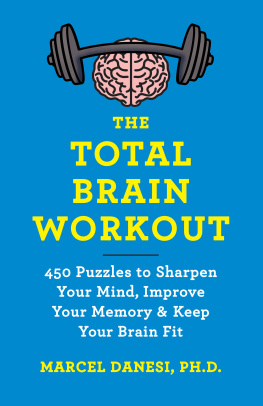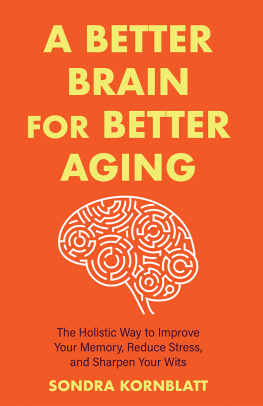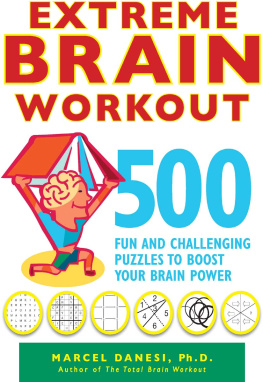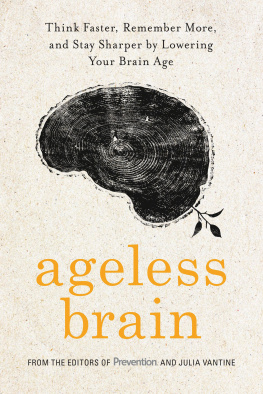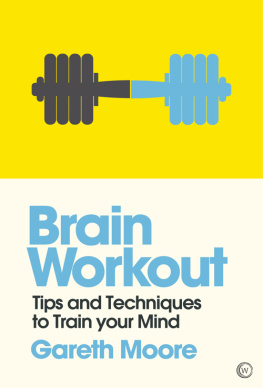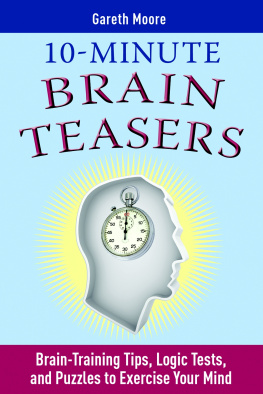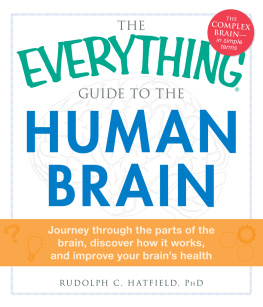To my family, my clients,
and Dr. John Martin
contents

A s an neurobiologist, Ive always been enthralled by how the brain orchestrates movementhow a pitcher can throw a ball and hit his mark or how a ballerina commands an incredible leap through the air. So it is easy to understand why I find Michael Gonzalez-Wallaces program so fascinating. Simply put, Michael has created a deceptively easy way to make the most of how our brains motor circuits work (all while getting a great workout, no less!). Motor circuits are the networks of nerve cell connections that enable us to perform the full range of our everyday movements, like reaching for a cup of coffee or tying a knot. Even the act of inserting a key into a lock uses many brain regions, so you can imagine that the simple yet challenging movements you will learn to perform in Super Body, Super Brain drive up brain activity enormously. And when a brain region is more active, it makes new connections so it can perform its job better, faster, and more efficiently.
Long-standing scientific observation has already shown that aerobic exercise benefits cognitive functions in children and adults. Michaels program is not only highly aerobic, but cognitive as well, in that it requires the participant to learn and perform complex movements. The Super Body, Super Brain program is a particularly efficient way to improve brain functions as it makes us more agile and fit.
Even simple, everyday actions are perceived by the brain as quite complicated. But the kinds of movements Michael teaches demand even more of our motor circuits. All of our voluntary movements have a goal, and our brain plans the movement ahead of timea sort of mental rehearsal. We may have only one chance to complete a movement, so we want our movements to succeed. As each action unfolds, the brain makes on-the-fly corrections to ensure that it is successful. Not surprisingly, when we make a relatively automatic or well-practiced movementthink about how many steps we take throughout the day or keys we typeour brain can more easily plan the movement. When we learn to make complex movements, though, our brain is forced to work harder. Michaels program is rich in movements that are new and not practiced, which require us to coordinate our bodies in ways that are very different from what we are accustomed to. This is much like reading a challenging novel. When we do, we must not only think about the meaning of individual words, and how the author combines the words into phrases with complex meanings, but we also might create a mental image of the storys actions. But unlike reading a difficult passage in a bookwhere we can take our time and re-read it, if necessarywe almost always have to perform these complex movements quickly. Picture a waiter bringing a bowl of soup to a table: one small mistake can snowball into a much bigger one that the customer will not appreciate! From one second to the next, the waiters brain must adjust his balance and arm position, while he navigates tables, chairs, and people. Those complex tasks, like the exercises in this book, are every bit as demanding as reading and reasoning.
As various brain regions are recruited during Super Body, Super Brain s exercise sequences, they become more active and, importantly, form new connections. This is simply the basic functioning of the brain. It is never static. When one part of the brain is more active, it changes both its internal connections and its connections with other parts of the brain. Existing connections are made stronger. Brand-new connections are made. Unused and unnecessary connections are eliminated. These modified connections are produced by many different kinds of biological mechanisms. One kind requires proteins that are called trophic factors. These proteins help to strengthen existing connections and form new connections. Active neurons produce these factors that help attract new connections. Withholding trophic factors can lead to eliminating unused connections. We think that the particular ways neurons become active during performance of a task will influence how proteins that are important in forming connections are made and used.
Not only do the kinds of movements in Super Body, Super Brain form new connections in the brain, they form them in regions that have diverse functions, like the cerebral cortex, cerebellum, basal ganglia, and hippocampus. Thats particularly important, because many parts of these regions are not primarily associated with movement. Theyre actually better known for their roles in cognition, emotions, and memory. But as you perform movements that involve combinations of arm and leg movements, your brain has to multitaskas it does, it builds new connections between these crucial parts of the brain.
And those benefits dont end when your workout does. Because youre conditioning your brain to perform a complex task, not just making your muscles stronger, youll begin to improve other brain functions, like paying attention and thinking. Michaels exercises require concentration, attention, and thinking, not just coordination, balance, and good timing. Brain imaging studies show that some of the same brain regions that become active during challenging movements, like the cerebellum and basal ganglia, also become active when we speak, read, and reason. Research suggests that it may not matter so much how we strengthen neural circuits. What is more important is that we strengthen them. And once made strongerby performing Michaels exercise program, for examplethose stronger neural circuits help us in countless other ways.
The Super Body, Super Brain program makes the brain work overtimenot just the parts that control our muscles and joints, but parts that participate in a wide range of everyday tasks. Moreover, this program is not static. Once we get it right, we move on to the next more difficult level, which helps keep our brain regions active. But lets not forget one last thing: the exercises in Super Body, Super Brain also make us fit! There is an exquisite synergy between the aerobic benefits of these lively and challenging movements, the way they activate the brain, and the biological benefits youll see as a result of your increasingly stimulated brain circuits. Super Body, Super Brain adds up to be an excellent cognitive workout masquerading as a smart, efficient way to condition your body. Give it a try, and see for yourself how our bodies and our brains work together in a rich and productive collaboration. Super Body, Super Brain is one workout that this neuroscientist wholeheartedly endorses!
John H. Martin, Ph.D.
It is exercise alone that lifts the spirits, and keeps the mind in vigor.
CICERO
W ho doesnt want to get smarter?
Brain fitness is big business. Bookstores and libraries have shelves lined with crossword-puzzle books, memory teasers, books of sudoku, DVDs, software gamesyou name itall promising to increase your cognitive powers for optimal brain functioning. But the one thing nearly all of these books and products have in common is this: they ignore movement.
And what part of your body controls movementalong with balance, coordination, posture, and decisions about how and when to execute any movement?
Your brain, of course.
Super Body, Super Brain is an incredibly effective and efficient progressive exercise programthe first of its kind. By spending a mere ten minutes a day at home, without any equipment other than a few hand weights, you will burn calories, improve your balance and coordination, make your muscles and cardiovascular system stronger without impacting your joints, and improve your learning power and concentration at the same time. (Youll be doing over six hundred movements in less than ten minutes!) Add another ten to twenty minutes, and you will maximize your results. In fact, Ill show you how breaking up your exercise time into ten-minute segments not only is as productive as doing one longer session, but makes finding the time to exercise particularly easy no matter how busy you are.


